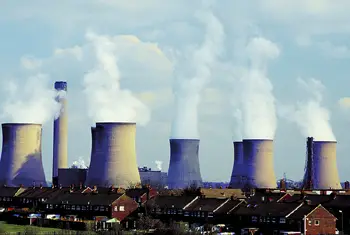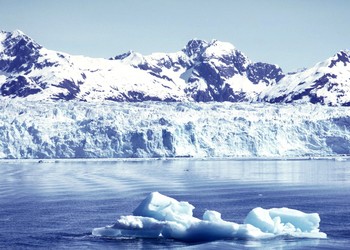Global Warming
Part 1: Natural and Manmade Causes Global warming is a term on the lips of many people these days. Just what is global warming? Should people be worried? What can be done to stop global warming? Should it be stopped or ignored? These are just some of the questions that make up the current debate in the topic of climate change and its effect on life on Earth now and in the future. First of all, a definition: Global warming is a perceived increase in temperature around the world. Weather trackers and forecasters keep tabs on temperatures all round the world, every day of the year. These geographers and scientists determine the average temperature for a place or a region, a country, or a continent. Putting all those figures together can give people an average worldwide temperature. And it is that average worldwide temperature that weather-watchers say is now increasing. (Some people would say that the temperature is increasing at an alarming level. What is certainly true is that the increases in temperature are happening more quickly now and in the past decade or so than at many times in history.)
The more greenhouse gases are produced, the more they flood the atmosphere, preventing heat from escaping and, in fact, reflecting it back toward Earth. This heat is nowhere near the heat produced by the Sun, but it is definitely heat that affects life on Earth. Another prime cause of the rise in worldwide temperatures is the activity of the Sun itself. The star that is at the center of the Solar System has been demonstrated to be getting hotter. It is certainly not anywhere near the end of its life, but it is going through a period when its core temperature is rising, causing an increase in the heat and radiation that the star itself gives off. All of this heat and radiation streams outward, bombarding Earth on a daily basis. The result is hotter temperatures all round.
Land that borders the world's oceans can be at the mercy of that water. Hurricanes and typhoons can buffet coastal lands. Rising sea levels can spell disasters for houses and buildings right on the coast. Sustained increases in sea levels can cause flooding on a mass scale. Scientists can definitely prove that the average temperature has gone up around the world. Many places have reported increases in temperatures. Some of these increases are more dramatic than others. Not all places have recorded rises in temperature, however; in fact, people in many places on Earth have reported an overall decrease in average temperatures. The average worldwide temperature is still climbing, though.
On the other side of the rainfall equation is the monsoon, an annual storm that brings torrential amounts of rain to a designated area. India and Bangladesh are particularly hard-hit by monsoons every year. This is also the case in parts of Southeast Asia. Hotter temperatures tend to encourage monsoons that are more vicious. The combination of more severe monsoons and rising sea levels is a double whammy for people who live on the coasts of India and Bangladesh. Next page > Conservation and Debate > Page 1, 2 |
|
Social Studies for Kids
copyright 2002–2024
David White



 One prime cause of this increase in worldwide temperature is the sharp increase in greenhouse gases. They are called this because like greenhouses, they keep heat in the atmosphere. Chief among these greenhouses gases is carbon dioxide, which is produced by the burning of fossil fuels, like coal, oil, and gasoline.
One prime cause of this increase in worldwide temperature is the sharp increase in greenhouse gases. They are called this because like greenhouses, they keep heat in the atmosphere. Chief among these greenhouses gases is carbon dioxide, which is produced by the burning of fossil fuels, like coal, oil, and gasoline. The hotter temperatures are, the faster glaciers melt. Glaciers, massive chunks of ice, make up a large part of Antarctica, Greenland, and other land areas in the far north and south. As temperatures change, glaciers can break free and float in the world's oceans. More significantly, the more they melt, the more water they add to those oceans and the higher world sea levels get.
The hotter temperatures are, the faster glaciers melt. Glaciers, massive chunks of ice, make up a large part of Antarctica, Greenland, and other land areas in the far north and south. As temperatures change, glaciers can break free and float in the world's oceans. More significantly, the more they melt, the more water they add to those oceans and the higher world sea levels get.  Another result of hotter temperatures is a decrease in rain. As rainfall drops, a place can get hotter and hotter. As a result, crops can be harder and harder to grow and water to feed those crops and help survive the people who grow them can get more and more scarce.
Another result of hotter temperatures is a decrease in rain. As rainfall drops, a place can get hotter and hotter. As a result, crops can be harder and harder to grow and water to feed those crops and help survive the people who grow them can get more and more scarce.
